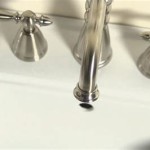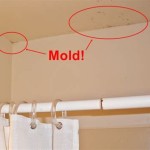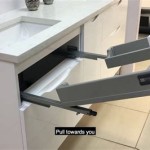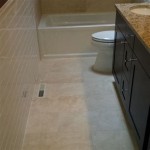How To Remove Ceramic Tile Off a Bathroom Wall
Removing ceramic tile from a bathroom wall is a common home improvement project undertaken for various reasons, including remodeling, repairing damaged tiles, or addressing moisture issues behind the tile. While it's a labor-intensive process, understanding the correct techniques and using the appropriate tools can significantly improve the outcome and minimize damage to the underlying wall structure. This article provides a comprehensive guide on how to effectively and safely remove ceramic tile from a bathroom wall.
Before commencing any tile removal project, careful planning and preparation are essential. This involves assessing the existing condition of the tiled wall, gathering the necessary tools and safety equipment, and preparing the work area to minimize dust and debris.
First, inspect the tiled wall thoroughly. Note the type of tile, the grout thickness, and any areas exhibiting loose, cracked, or missing tiles. This assessment helps to determine the best approach for removal and anticipate potential challenges. Consider the type of wall behind the tile. Common wall materials include drywall, cement board, or plaster. Understanding the wall material is crucial because certain removal techniques are more suitable for specific surfaces. For instance, aggressively chipping away at tiles on drywall can cause significant damage, necessitating repair or replacement of the drywall.
Next, gather the necessary tools. The fundamental tools for removing ceramic tile include a hammer, a chisel (several sizes and types, including a cold chisel and a thin-set mortar chisel), a pry bar, a utility knife, a grout saw or scraper, safety glasses, work gloves, a dust mask or respirator, and a bucket or trash bags for debris disposal. Depending on the scope of the project and the hardness of the tile and grout, a power tool such as an oscillating multi-tool with a grout removal attachment or a small demolition hammer might be beneficial.
Preparing the work area is equally important. Lay down drop cloths or plastic sheeting to protect the bathroom floor and any fixtures that might be affected by dust and debris. Seal off the bathroom doorway with plastic sheeting and tape to contain the dust. Ensure adequate ventilation by opening windows or using a fan to exhaust air outside. Clear the bathroom of any movable items such as toiletries, towels, and decorative objects. Disconnect any electrical outlets or fixtures near the work area and cover them with plastic sheeting to prevent dust contamination.
Key Point 1: Grout Removal Is Essential First
Before attempting to remove the tiles, the grout surrounding them must be removed first. This crucial step releases the bond between the tiles and allows for a cleaner and easier removal process. Several methods can be used to remove grout, depending on the type of grout and the tools available.
The most basic method involves using a grout saw or a grout scraper. These handheld tools are designed to manually cut or scrape away the grout. Work the tool along the grout lines, applying consistent pressure to remove the grout without damaging the surrounding tiles. This method is effective for small areas or for removing soft grout. However, it can be time-consuming and physically demanding for larger projects.
An oscillating multi-tool with a grout removal attachment offers a more efficient alternative. The oscillating action of the tool allows for precise and controlled grout removal. Select a grout removal blade that is appropriate for the width of the grout lines. Guide the tool along the grout lines, applying gentle pressure to avoid damaging the tiles. The oscillating multi-tool is particularly useful for removing hard or epoxy-based grout.
A utility knife can also be used to score the grout lines, especially in areas where the grout is thin or cracked. Carefully run the blade along the grout lines to weaken the bond. This method is often used in conjunction with other grout removal techniques.
Regardless of the method used, exercise caution to avoid damaging the surrounding tiles or the underlying wall surface. Take breaks as needed to prevent fatigue and maintain focus. After removing the majority of the grout, use a shop vacuum to remove any remaining debris from the grout lines.
Key Point 2: Utilizing the Hammer and Chisel Technique
Once the grout has been removed, the next step is to remove the tiles from the wall. The hammer and chisel technique is a common and effective method for this purpose. This technique involves using a hammer and chisel to carefully break the bond between the tiles and the wall. The key is to apply controlled force to minimize damage to the underlying wall structure.
Start by selecting the appropriate chisel. A cold chisel or a thin-set mortar chisel is typically used for this task. The size and shape of the chisel should be appropriate for the size of the tiles and the thickness of the mortar bed. Place the chisel at an angle against the edge of a tile, near a grout line. Use the hammer to gently tap the end of the chisel, applying controlled force to break the bond between the tile and the wall. Avoid hitting the chisel too hard, as this can cause the tile to shatter or damage the wall.
Work your way around the tile, gradually loosening it from the wall. If the tile is particularly stubborn, try inserting the chisel behind the tile and gently prying it away from the wall. Be careful not to force the tile, as this can cause it to break or damage the wall. As the tile loosens, use the chisel or a pry bar to carefully remove it from the wall.
Repeat this process for each tile, working systematically across the wall. Periodically check the underlying wall surface for any signs of damage. If the wall is damaged, stop and assess the situation before proceeding. It may be necessary to adjust the technique or use a different tool to minimize further damage.
When removing tiles around fixtures or corners, exercise extra caution. Use a smaller chisel and apply gentle pressure to avoid damaging the fixture or the surrounding tiles. It may be necessary to score the grout lines with a utility knife to further weaken the bond.
During the tile removal process, debris and dust will inevitably accumulate. Use a shop vacuum to regularly clean the work area and maintain a clear workspace. Dispose of the removed tiles and debris in a safe and responsible manner.
Key Point 3: Addressing the Thin-Set Mortar
After the tiles have been removed, a layer of thin-set mortar will remain adhered to the wall. This mortar must be removed to create a smooth and even surface for the new tiles or wall covering. Several methods can be used to remove thin-set mortar, depending on its thickness and hardness.
A thin-set mortar chisel and hammer can be used to chip away at the mortar. Hold the chisel at a low angle against the mortar and use the hammer to gently tap the end of the chisel. Work in small sections, gradually removing the mortar without damaging the underlying wall surface. This method is effective for removing thin layers of mortar or for addressing stubborn areas.
A power scraper or a demolition hammer with a scraper attachment offers a more efficient alternative for removing larger areas of mortar. These tools use vibration or impact force to loosen the mortar from the wall. Guide the tool along the surface of the mortar, applying gentle pressure to avoid damaging the wall. Be careful to control the tool and prevent it from digging into the wall surface.
A chemical mortar remover can also be used to soften the mortar and make it easier to remove. Apply the chemical remover according to the manufacturer's instructions. Allow it to sit for the recommended amount of time, then use a scraper or chisel to remove the softened mortar. Chemical mortar removers can be effective, but they should be used with caution, as they may contain harsh chemicals that can damage the wall or pose a health hazard. Always wear appropriate safety gear, such as gloves and eye protection, when using chemical mortar removers.
After removing the majority of the mortar, use a sanding block or a grinder with a sanding pad to smooth out any remaining imperfections. This will create a level surface for the new tiles or wall covering. Use a shop vacuum to remove any remaining dust and debris from the work area.
Inspect the wall surface for any signs of damage, such as cracks, holes, or gouges. Repair any damage before proceeding with the next phase of the project. Use patching compound or drywall mud to fill in any imperfections and create a smooth, even surface.
Properly removing ceramic tile from a bathroom wall requires patience, attention to detail, and the use of appropriate tools and techniques. By following the steps outlined in this article, individuals can effectively and safely remove ceramic tile while minimizing damage to the underlying wall structure.

Easy Diy Guide On Removing Tiles From Walls Fantastic Handyman Au

Diy How To Remove Ceramic Tiles Off Drywall

How To Remove Wall Tiles

Removing Bathroom Tiles

How To Remove A Tile Backsplash Homeserve Usa

Tile Removal How To Remove From Wall

Tips On How To Remove Old Shower Tile Ugly Duckling House

How To Remove Old Tiles A Step By Guide Walls And Floors

How To Remove Tiled Shower Walls The Floor Elf

How To Remove Replace One Bathroom Tile Ceramic Repair
Related Posts







